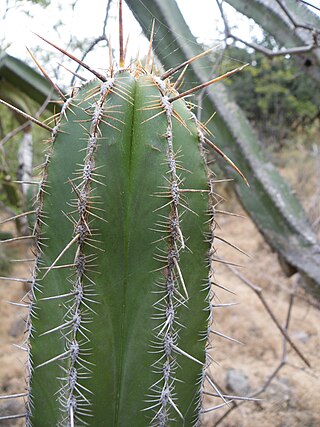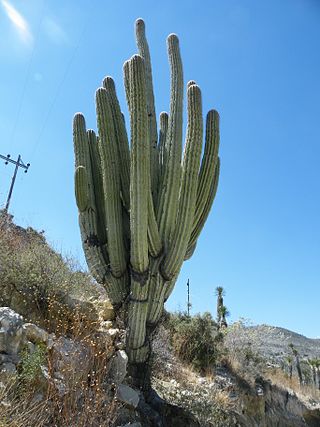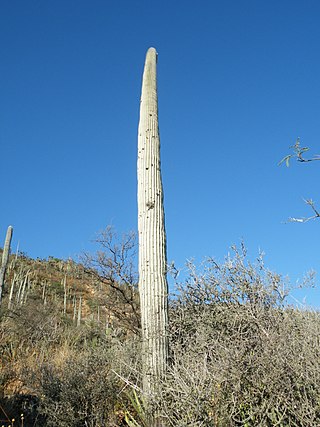
Escontria is a genus of cactus. The only species is Escontria chiotilla, the chiotilla or jiotilla.

Arthrocereus glaziovii is a species of plant in the family Cactaceae. It is endemic to Brazil. Its natural habitat is rocky areas. It is threatened by habitat loss.

Echinocereus pentalophus, with the common name ladyfinger cactus, is a species of Echinocereus cactus, in the tribe Echinocereeae Tribe. It is native to North America.

Soehrensia thelegona is a species of cactus in the Soehrensia genus.

Weberbauerocereus weberbaueri is a species of Weberbauerocereus from Peru.

Soehrensia huascha, is a species of Soehrensia in the Cactaceae family, found in north western Argentina. First published in Cactaceae Syst. Init. 29: 5 in 2013.

Polaskia chende is a succulent cactus native to a small area of mountains of northern Oaxaca and southern Puebla, Mexico. It grows in xerophytic shrubland between 1,500 and 2,000 meters above sea level.

Cleistocactus smaragdiflorus is a species of Cleistocactus found in Bolivia and Argentina.

Xiquexique gounellei is a species of plant in the genus Xiquexique of the cactus family. Common names include "Alastrado", "Chique-Chique", "Xique-Xique" and "Xique-Xique das Pedras".

Pachycereus weberi is a columnar cactus plant native to Mexico.

Cephalocereus fulviceps is a species of Cephalocereus from Mexico.

Cephalocereus macrocephalus, synonym Neobuxbaumia macrocephala, is a species of cactus endemic to Mexico.

Cephalocereus columna-trajani is a species of cactus from Mexico.

Cephalocereus mezcalaensis is a species of Cephalocereus from Mexico.
Cephalocereus apicicephalium is a species of cactus from Mexico.

Cephalocereus scoparius is a species of Cephalocereus from Mexico.

Cephalocereus polylophus is a species of cactus endemic to Mexico. Often grown under the synonym Neobuxbaumia polylopha, it is popular with cactus growers and reproduces well in cultivation.

Pelecyphora alversonii commonly known as cushion foxtail cactus or cushion fox-tail cactus, is a species of flowering plant in the family Cactaceae, native to the southwestern United States.

Echinocereus brandegeei is a species of cactus native to Mexico.

Echinocereus maritimus is a species of cactus native to Mexico.

























